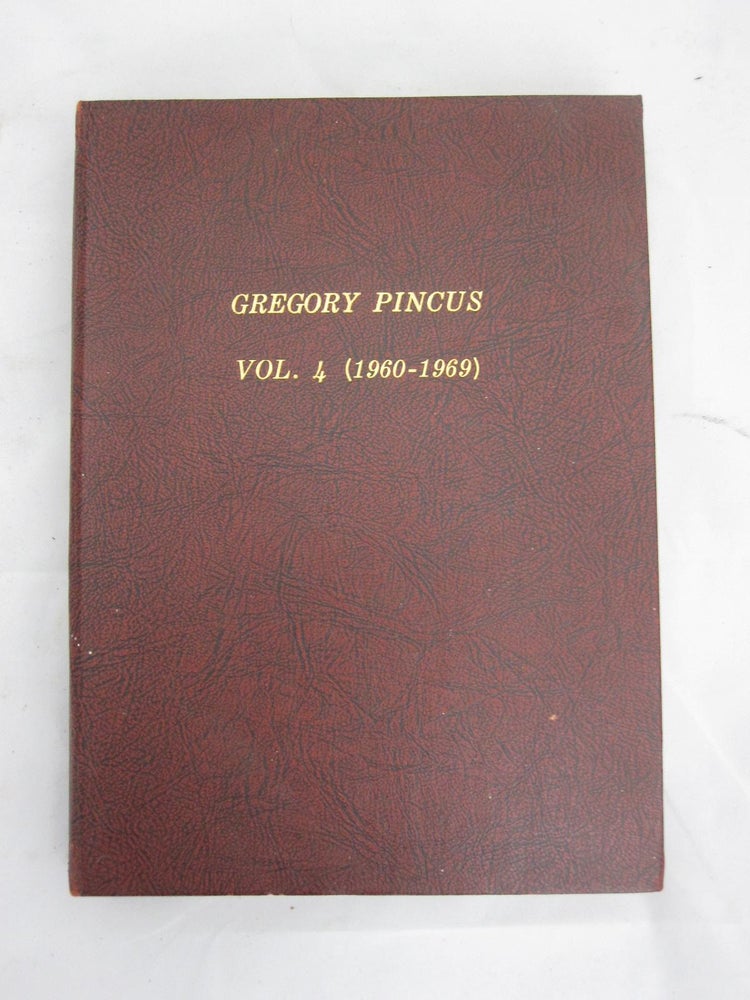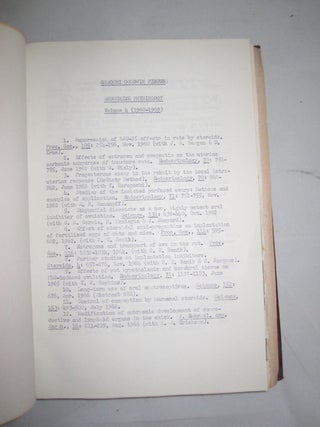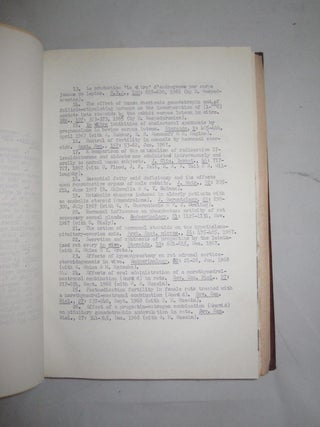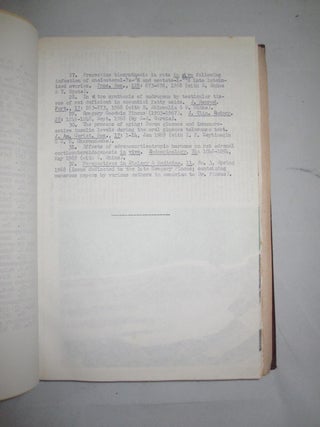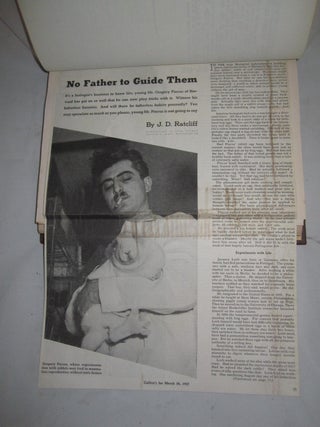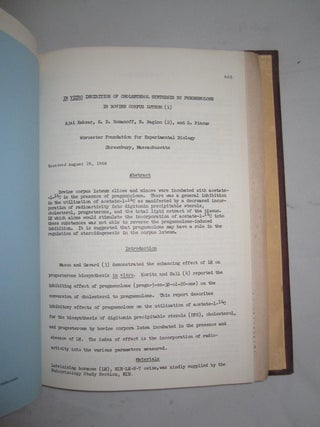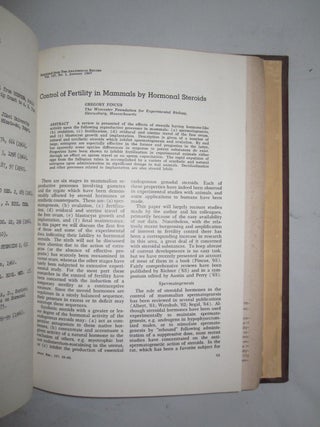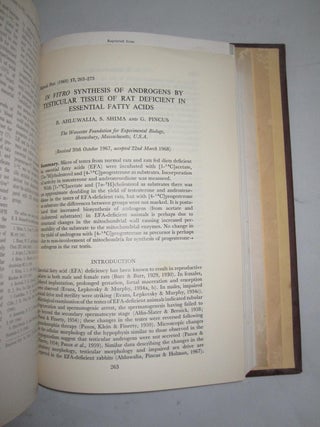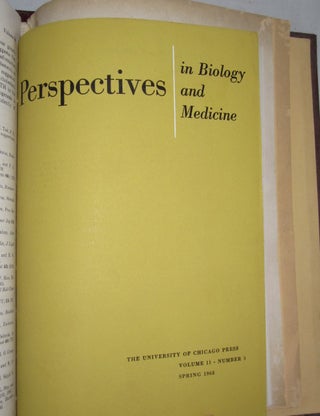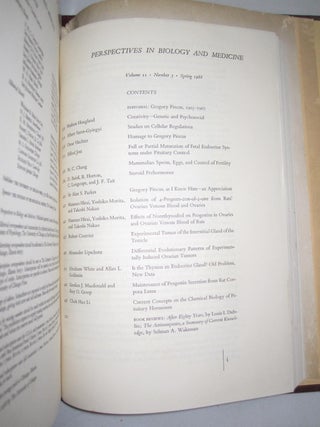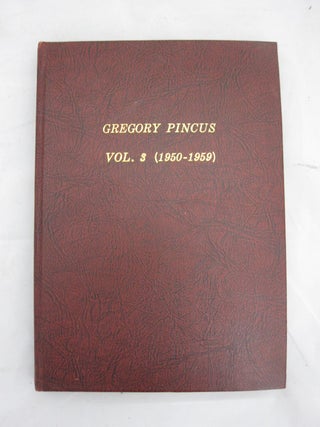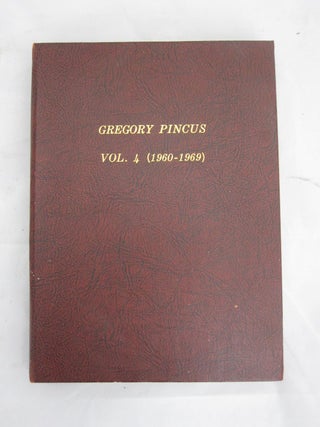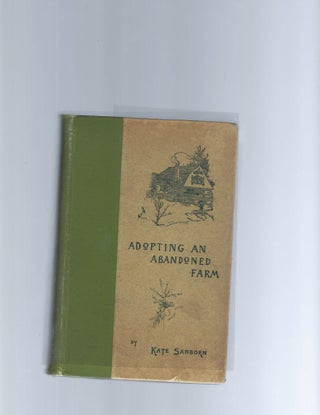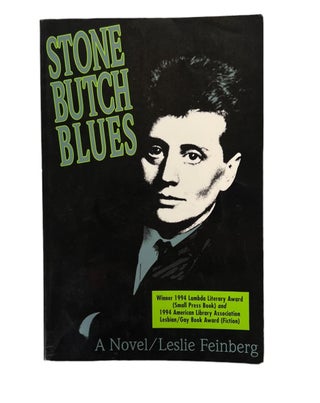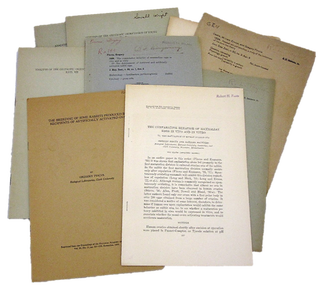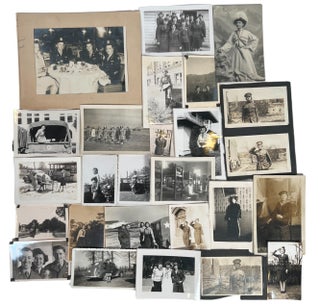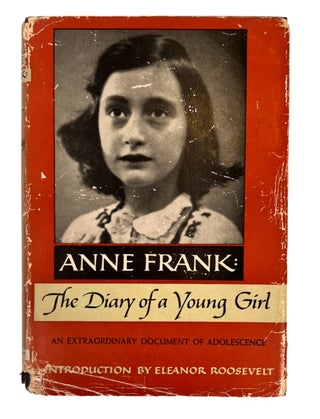Gregory Pincus Archive of 32 Rare Bound Offprints of Fertility Research Related to the First Oral Contraceptive Pill (1960-1969)
Archive
Gregory Pincus. Father of The Oral Contraceptive Pill. Bound collection of 32 rare offprints of Pincus’s scientific publications on fertility research, conducted in the aftermath of the FDA approval for Enovid, the first Oral Contraceptive Pill. 10.5 x 7.5 in. Dark red textured cloth boards. “Gregory Pincus Vol. 4 (1960-1969)” gilt on front cover. “Gregory Pincus Vol. 4” gilt on spine. Offprints are the rarest and most collectible forms that a journal article can take. Few are printed, perhaps only two or three, and these are usually given to the authors of the piece. Sometimes authors give them away to colleagues, so it’s not unusual to find offprints with presentation inscriptions or important ownership signatures. Three years after the FDA approved Pincus's oral contraceptive, Under the Economic Opportunity Act of President Johnson’s War on Poverty, the government started the funding of clinics in disadvantaged areas and the expansion of existing family planning programs. Federal family planning funds were allocated, in part, to Pincus's contraceptives. As a result of Pincus’s research and experiments, and development of the first oral contraceptive pill had a huge impact on the socio-economic aspects in society and the nuclear family structure. During this time, Pincus published his second book The Control of Fertility (1965), which includes findings from his life-long research on egg development, ovulation, hormone treatments, and fertility in mammals. He also pursued new research on long-term effects of hormone treatments, including effects on long-term fertility after how synthetic hormones may affect embryonic growth. In “Postmedication fertility in female rats treated with a norethynodrel-mestronal combination (Enovid),” published posthumously after Pincus’s death in 1967, found that “long term administration of Enovid...indicated no postmedicaiton impairment of fertility.” In “Long-term use of oral contraceptives,” Pincus defends the safety of using oral contraceptives for “year-in, year-out” use; again in “Control of conception by hormonal steroids,” Pincus states: “There is no substantial evidence that the benefits of oral contraceptives are offset by adverse affects.” The article goes on to describe typical and abnormal reactions to the oral contraceptives, including amenorrhea (absence of menstruation) and breast sensitivity. He also conducted further research on hormonal responses that would be important for developing subsequent generations of the pill. The original Enovid patent contained far more hormones than were necessary to control fertility, around 10,000 micrograms of progestin and 150 micrograms of estrogen. In comparison, today’s lower-dose pills are more likely to contain 50–150 micrograms of progestin and 20–50 micrograms of estrogen. The original high doses increased the likelihood and severity of side-effects, so Pincus and his colleagues continued to study the affects and refine the formula. In “Fertility Control by Hormonal Steroids,” Pincus remarks on research that a colleague has conducted: “Continuous daily use of a progestin a relatively low dose has been found by be contraceptive effective in women,” although they debate whether this lower-dose inhibits ovulation or there is a different effect from hormones which inhibit conception.Additionally, comes with an article clipping unlisted in the index “No Father to Guide Them,” from Collier’s magazine (March 20, 1937), which cover’s Pincus’s early work with in vitro, parthenogenetic reproduction of rabbits. “It’s a biologist’s business to know life; young Mr. Gregory Pincus of Harvard has got on so well that he can now play tricks with it. Witness his fatherless bunnies. And will there be fatherless babies presently?” “The father of that initial growth [fertilized ovum] was not a healthy buck rabbit. It was nothing more than a tube of extremely salty water...Had he actually fertilized a mammalian egg without the services of a male? It couldn’t be that. Yet that egg had been fertilized by something. What? Salt solution?...” The article then somewhat wildly speculates about potential human applications of this development. “Apparently there is little reason why the rabbit findings cannot be applied to human beings in the near future. Many women have bodies structurally unable to bear children. Others--business executives--have just as deep yearnings for children[...], but not the time to devote to childbearing...For these two classes ‘host mothers’ might be the answer...it seemed thoroughly possible to develop an ‘artificial’ baby in the glass heart-hung apparatus…” The article closes with Pincus objecting to these potential applications to humans, saying that he “snapped with annoyance.” Because of public outrage and controversy about the limits of scientific experimentation (fueled, in part, by this article), Pincus lost his faculty position at Harvard University. He conducted his subsequent research, including the important work for developing the oral contraceptive pill, at Clark University, Tufts, Boston University, and the Worcester Foundation for Experimental Biology which he co-founded in 1944.
There are also 2 memorials to Pincus, including the full Spring 1968 issue of the journal "Perspectives in Biology and Medicine" (Vol. 11, No. 3), which was planned in honor of his 65th birthday in April 1968; Pincus died the previous year, and so “some of the essays were completed before his death. No author has been asked to change the tone of the essay which was intended to honor Gregory while alive.” Includes 14 articles on fertility, effects of various hormones, and endocrinology by esteemed colleagues including M.C. Chang, Hudson Hoagland, and Alfred Jost. In his essay, M.C. Chang recalls when he first met Margaret Sanger and worked with Pincus to develop the pill. “In 1950, before we started our oral contraceptive project, Pincus accompanied two ladies, Mrs. Margaret Sanger and Mrs. Stanley McCormick on a visit to my laboratory. I remember quite vividly that, after I told them what I was doing, one for the ladies remarked to me, ‘I do envy you working tin the laboratory; you must have lots of fun. ‘ I answered her rather abruptly, ‘Sure enough, but I hope it can be useful!’” These essays are a touching tribute to Pincus from those who worked closely with him, in addition to being scientifically relevant papers, worthy of publication in a leading academic journal.
Selection of the 32 offprints listed below. Complete index included in object photographs. All are incredibly rare. At the time this description is being written, none of the copies listed below are listed in any institutional collections, according to OCLC Worldcat:
“Long-term use of oral contraceptives.” Science, Vol. 152, April 1966
“Control of conception by hormonal steroids.” Science, Vol. 153, July 1966.
“Further studies on implantation inhibitors.” Steroids, Vol. 4, Nov. 1964.
“Postmedication fertility in female rats treated with a norethynodrel-mestronal combination (Enovid).” Rev. Can. Niol., Vol. 27, Sept. 1968.
“Effects of a progestin-estrogen combination (Enovid) on pituitary gonadotrophin and ovulation in rats,” Rav. Can. Biol.. Vol. 27, Dec. 1968.
“Control of fertility in mammals by hormonal steroids.” The Anatomical Record., Vol 157, Jan. 1967.
“Effect of steroidal anti-progestins on implantation of fertilized eggs of rats and mice.” Proceedings of the Society for Experimental Biology and Medicine, Vol. 111, 1962.
“Estrogens and the transport of ova in the rat.” Proc. Soc, Vol. 116, 1964.
“Effects of estrogen and progestin on the uterine carbonic anhydrase of immature rats.” Endocrinology, Vol. 70, June 1962
“Progesterone assay in the rabbit by the local intra-uterine response (McGinty Method)” Endocrinology, Vol. 70, June 1962
“Studies of the isolated perfused ovary: Methods and examples of application.” Endocrinology, Vol. 71, Nov. 1962.
“Ethynodiol diacetate as a new, highly potent oral inhibitor of ovulation.”Science, Vol. 138, Oct. 1962
“Effects of rat hypothalamic and cerebral tissue on PMS-induced ovulation.” Endocrinology, VOl. 76, June 1965.
“Modification of embryonic development of reproductive and lymphoid organs in the chick.” Journal of Embryol. Exp. Morph., Vol. 16, Aug. 1966.
“Secretion and synthesis of progestins by the luteinized rat ovary in vivo.” Steroids, Vol. 10, Dec. 1967.
Item #16914
Price: $4,500.00
See all items by Gregory Pincus

